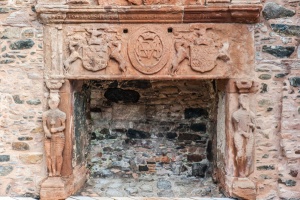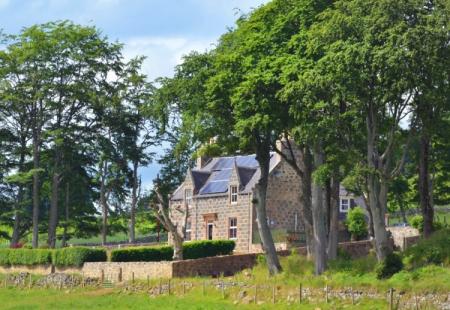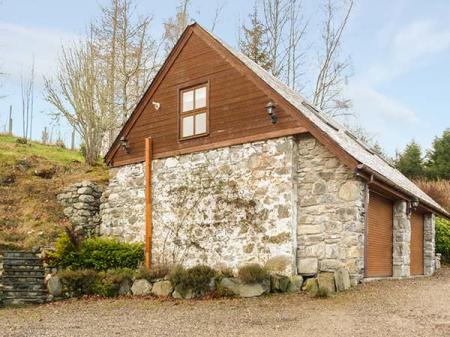
The line of Gordon de Huntly heirs carried on until 1406 when the estate passed to Sir Alexander Seton through marriage to the last Gordon's sister. Seton, created Lord Gordon by James I, replaced the old laird's residence on the Norman motte with a grand new tower house. A later Seton, Alexander, changed the family name to Gordon in 1457. A few years before then, in 1452, Archibald Douglas, Earl of Moray, sacked Huntly Castle when Gordon was away. Alexander retaliated by sacking Elgin.
In 1506 the 3rd Earl changed the name of the castle from Strathbogie to Huntly. They welcomed royal visitors on several occasions; James IV is known to have visited numerous times. But it was the visit of another royal that was to prove the downfall of the Gordons.

The canny queen took advantage of the fact that Gordon was a staunch Catholic. To show her troublesome Protestant lords that she did not favour Catholics - and that she would allow no challenge to her own authority - she arrested Gordon at Corrichie. While being transported to trial at Edinburgh, Gordon - rather conveniently - fell from his horse and died.
The next Earl was bit luckier; he died at Huntly after playing football. The 6th Earl plotted against James VI and had to flee to France, whereupon the king ordered Huntly Castle to be destroyed. Later generations did rebuild portions of the castle, and it was besieged twice during the religious strife of the mid-17th century, and briefly occupied by government troops during the 1745 Jacobite Rising.
Unquestionably the greatest treasure at Huntly is the exquisite frontispiece that guards the main entrance doorway. This is completely unique in the British Isles. It is a tall, slender arrangement of carvings, one above the other, with worldly themes gradually transformed to spiritual symbolism. At the base are the arms of George Gordon and his wife, Henrietta Stewart. Above these are the royal arms of James VI and Queen Anne. Still higher is a carving of the Crucifixion and resurrection, surmounted by a depiction of the Day of Judgement. The overall effect of the frontispiece is staggering; it is truly unique and quite amazing.
George Gordon did not stop at the frontispiece, however. If you climb to the second floor of the tower you will find a pair of superbly carved fireplaces, probably meant to decorate the apartments of Lady Henrietta. They bear the arms of Gordon and Lennox and are magnificently carved. The second fireplace (images below) is the best example of its kind in Scotland. It is amazingly ornate, with a monogram of the Marquis and Marchioness, coats of arms of their families, and even a couple of candleholders carved into the lintel. The lintel itself is supported by a pair of carved figures in armour, and the lintel edge is carved with the phrase from the Book of Romans
'To Thaes that love God al Thingis Virkis to the Best'
Which loosely translates as 'To those that love God all things work out for the best'.
Above the lintel is a royal coat of arms to James VI and I, flanked by obelisks. Parts of the remainder have been defaced, possibly in a fit of Puritanical outrage by James Wallace, a captain in the Covenanting army, who in 1640 was known to have damaged the frontispiece and destroyed 'popish and superstitious emblems'. Despite Captain Wallace's efforts, the fireplace is quite staggeringly beautiful, though obviously suffering from exposure to the elements over the centuries.
Of the surviving subsidiary buildings within the castle, the best preserved is the brewhouse. Most large households would have had their own brewery within the walls; sanitary conditions were generally poor and water was rightly suspect for drinking purposes, so beer or wine was a much safer bet.
Huntly Castle is a marvellous historic treasure; where history seems to ooze from every stone. It is well worth a visit.
THE FRONTISPIECE



THE FIREPLACES











 We've 'tagged' this attraction information to help you find related historic attractions and learn more about major time periods mentioned.
We've 'tagged' this attraction information to help you find related historic attractions and learn more about major time periods mentioned.




